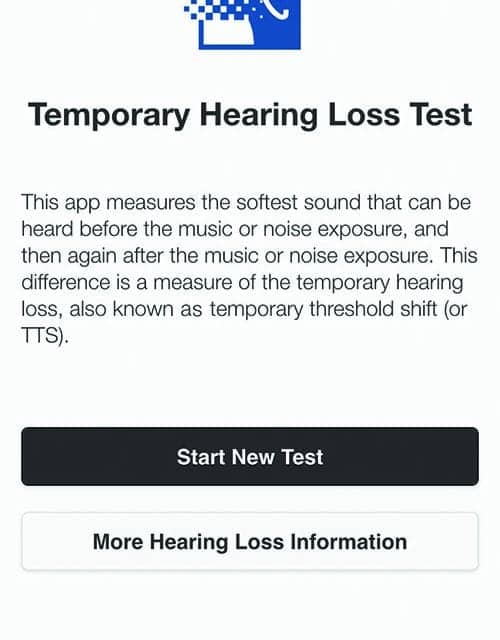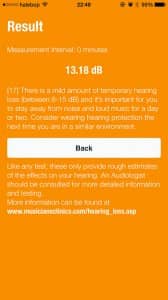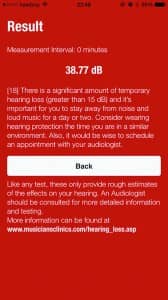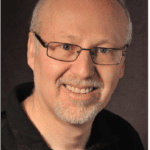Tech Topic | June 2016 Hearing Review
Ultimately the question arises whether a certain exposure to noise or music did, or did not, create a pathological result in an individual person. Individual assessment of TTS would provide information for each person and provide invaluable long-term prevention information for that individual. The Temporary Hearing Loss Test app addresses the important issue of whether there is TTS or not, and if so, how much.
In 1995, Erik Borg and his colleagues1 published a comprehensive review of a number of studies dealing with noise exposure and its effect on both temporary threshold shift (TTS) and permanent threshold shift (PTS). In short, Borg found no relation between TTS, which typically resolves in 16-18 hours, and PTS other than to conclude that one needs to have some TTS before permanent hearing loss is noticed. In these studies, the measurement of puretone acuity was assessed.
This review of the literature echoed the results of many previous studies (for example, Ward et al’s 1976 study2) and was a source of frustration for many in the hearing health prevention fields. TTS appeared to be just a benign quirk of noise exposure that would soon disappear. Industrial hygienists, physicians, and audiologists could not use the presence or absence of TTS to predict whether an individual was more or less susceptible to future hearing loss.
Over the last 10-15 years, however, other researchers have begun to use tools that go beyond the simplistic puretone audiogram. While cochlear deficit as a result of noise or music exposure can be assessed with some modicum of validity with puretones, more advanced and more objective testing, such as otoacoustic emission testing and even wave I in ABR, have been used. These tests, combined with modern scanning techniques show that, even after the measureable effects of puretone TTS have resolved, there is a host of permanent neural pathologies. These include:
1) Rapid inner hair cell (afferent) synaptic loss;
2) Rapid inner hair cell dendritic loss;
3) Slow spiral ganglion cell loss, and
4) Persistent reductions in suprathreshold neural responses (ie, reduced wave I ABR).

Of special interest is that the Kujawa and Liberman4 study provides data that early noise exposure may “render the inner ears significantly more vulnerable to aging” (p 2115) and the Gates et al3 study indicates that noise-induced hearing loss may continue to increase after retiring from the occupational noise environments, especially if the noise induced hearing loss is significant at the time of work retirement.
TTS may leave the cochlear hair cells intact, but resolvable TTS, depending on the exposure, can result in permanent neural damage in the auditory system.
Prevention is What We Do (or What We Should Do!)
Hearing loss prevention is the cornerstone of any intervention. This is true whether we are dealing with industrial noise, music, sporting events, or recreational noise sources such as hunting or motorsports. TTS is no longer something that can be dismissed as a benign and interesting artifact of noise or music exposure. It is an important measurable piece of data that in some sense may be just as important as the sound level (in dBA) or the duration of exposure. Measurement of noise or music levels is important, as is the dose, but there will be individual variations of the effect of the received dose.
Ultimately the question arises whether a certain exposure to noise or music did, or did not, create a pathological result in an individual person. Individual assessment of TTS would provide information for each person and provide invaluable long-term prevention information for that person.
Temporary Hearing Loss Test App
In view of the newer research on TTS over the last 10-15 years, an app (Figure 1) has been developed where TTS can be measured by anyone with a Smartphone (available from the Apple Store for the iPhone, and from Google for Androids).
Using earphones a person can, within several seconds, measure their hearing threshold at 6,000 Hz, and this number is saved. Without changing the volume setting on the Smartphone, the person goes to work in a factory, listens to or plays music, or goes to a sporting event, and then immediately after the event, their hearing acuity is measured for a second time, and this number is saved.
This difference is a measure of TTS. Because the app uses a “difference” between two measurements, no calibration is required. Measurements are valid as long as the Smartphone volume control has not been changed, and the “before” and “after” measurements were performed in similar environments.
Depending on the degree of TTS, one of three screens will be shown: green colored for minimal TTS (<5 dB); orange colored for some degree of TTS (6-15 dB); and a red screen for TTS that is greater than 15 dB (Figures 2-4).
Each screen has information about hearing loss prevention as well as a link to the FAQ page at the http://www.MusiciansClinics.com website. The data from the TTS measurement can be emailed along with the duration between the first and second parts of the test.
Using the Temporary Hearing Loss Test app, individuals can now quickly assess whether the noise or music exposure resulted in a change in hearing acuity. While repeated TTSs may only last 16-18 hours, as shown by Kujawa and her colleagues, long-term neural damage may ensue.
This app is not intended as a replacement for industrial assessment of the noise or of the dose; however, it does provide one more important piece of the hearing loss prevention puzzle.
The Temporary Hearing Loss Test app simply addresses the important issue of whether there is TTS or not and how much, and this is evaluated on an individual basis.
While it is true that changes in puretones are a simplistic measure of the effects of loud noise or music, they can be used to assess TTS and can provide information to minimize long-term neural changes—and ultimately sensory changes in the hearing mechanism.
These changes may result in tinnitus, hyperacusis, or eventual permanent hearing loss.
More information about this new app can be found at http://www.MusiciansClinics.com.
References
-
Borg E, Canlon B, Engstrom B. Noise-induced hearing loss: Literature review and experiments in rabbits. Scand Audiol. 1995;40[Suppl]:1-147.
-
Ward WD, Cushing EM, Burns EM. Effective quiet and moderate TTS: Implications for noise exposure standards. J Acoust Soc Am. 1976;59:160-165.
-
Gates GA, Schmid P, Kujawa SG, Nam B, D’Agostino, R. Longitudinal threshold changes in older men with audiometric notches. Hearing Res. 2000;141:220-228.
-
Kujawa SG, Liberman MC. Acceleration of age-related hearing loss by early noise exposure: Evidence of a misspent youth. J Neurosci. 2006; 26(7):2115–2123.
-
Kujawa SG, Liberman MC. Adding insult to injury: Cochlear nerve degeneration after “temporary” noise-induced hearing loss. J Neurosci. 2009; 29(45):14077-14085.
Marshall Chasin, AuD, is an audiologist and director of research at the Musicians’ Clinics of Canada, Toronto. He has authored five books, including Hearing Loss in Musicians and Noise Control–A Primer, and serves on the editorial advisory board of HR.
Correspondence can be addressed to HR or Dr Chasin at: [email protected]
Original citation for this article: Chasin M. A Temporary Hearing Loss Test App. Hearing Review. 2016;23(6):32.?








